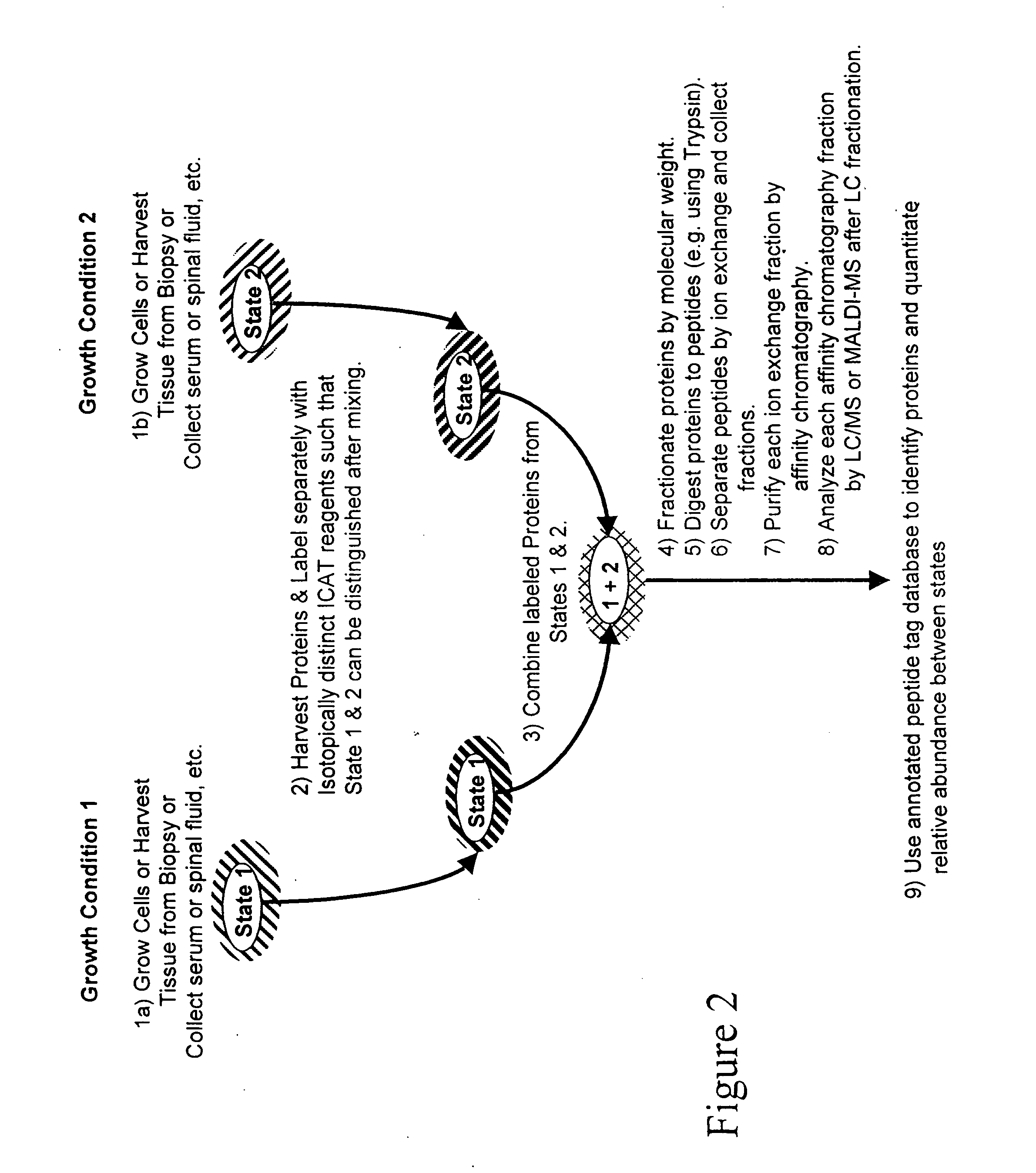Methods for rapid and quantitative proteome analysis
a proteome and quantitative technology, applied in the field of proteome analysis, can solve the problems of time-consuming, inability to detect biologically important classes of proteins, and inability to sequence and tedious approaches,
- Summary
- Abstract
- Description
- Claims
- Application Information
AI Technical Summary
Benefits of technology
Problems solved by technology
Method used
Image
Examples
example i
Generation of an Annotated Polypeptide Index
[0121] This example describes the generation of an annotated polypeptide index and use of the annotated polypeptide index to identify a polypeptide in a sample.
[0122] The elements of an annotated polypeptide (AP) index, also referred to as an annotated peptide tag (APT) index or database, are the sequences of essentially all the peptides or selected peptides with specific structural features that are generated by sequence specific chemical or enzymatic fragmentation of the proteins produced by the species, cell or tissue under investigation. Each peptide is annotated with attributes, or characteristics, that are easily determined experimentally and that permit the unambiguous correlation between the annotated peptide and the protein from which the peptide originated.
[0123] The generation of an exemplary AP index can involve the following specific steps: harvest proteins; label proteins with an isotope coded affinity tag (ICAT™) type rea...
example ii
Generation of a Yeast Annotated Polypeptide Index
[0135] This example describes the generation of an annotated polypeptide index for yeast.
[0136] At least 5 mg of total protein was estimated to be required at current mass spectrometer sensitivity to detect low abundance proteins using the LC / LC / MS / MS method (Gygi et al., Proc. Natl. Acad. Sci. USA 97:9390-9395 (2000)), and this amount was essentially experimentally confirmed. Gygi et al., supra, 2000 also demonstrated that the “binning” process is adequate for the detection of low abundance proteins and has sufficient sample capacity to accommodate the relatively large amounts of total sample.
[0137] For the construction of the database, the following procedure is used. For protein labeling, a protein sample is generated in 0.5% SDS, 50 mM Tris, pH 8.3, 5 mM ethylenediaminetetraacetic acid (EDTA) at a protein concentration of 5 mg / ml. A total of 25 mg of total yeast protein is used. Once proteins are in solution, the SDS concentrat...
PUM
| Property | Measurement | Unit |
|---|---|---|
| concentration | aaaaa | aaaaa |
| pore size | aaaaa | aaaaa |
| pore size | aaaaa | aaaaa |
Abstract
Description
Claims
Application Information
 Login to View More
Login to View More - R&D
- Intellectual Property
- Life Sciences
- Materials
- Tech Scout
- Unparalleled Data Quality
- Higher Quality Content
- 60% Fewer Hallucinations
Browse by: Latest US Patents, China's latest patents, Technical Efficacy Thesaurus, Application Domain, Technology Topic, Popular Technical Reports.
© 2025 PatSnap. All rights reserved.Legal|Privacy policy|Modern Slavery Act Transparency Statement|Sitemap|About US| Contact US: help@patsnap.com


